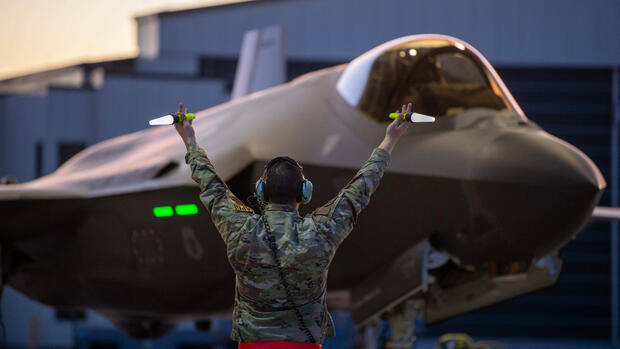The 31 NATO member states have a lot to discuss at the July 11-12 summit in Lithuania’s capital, Vilnius. The Ukraine war and military support for Kiev are likely to be in the foreground, as well as Sweden’s accession to NATO and a possible NATO perspective for Ukraine. All questions are always about money, especially about NATO’s two percent target.
According to media reports, in the run-up to the summit, the NATO members agreed to tighten the target for national military spending: in the medium term, all NATO members should spend two percent of gross domestic product (GDP) on their own armed forces. So far, the target stated that NATO members should approach this value by 2024.
But how many of the NATO members have recently met this goal? According to forecasts, how many will reach it in 2023? How many active soldiers do the NATO countries have? Which NATO armies are the largest? And which important weapon systems have NATO countries recently bought? Questions and answers on the NATO summit in Vilnius.
Which NATO members have reached the two percent target in 2022?
To date, only a fraction of NATO member states have spent two percent of their annual economic output on their own military. Last year, only eight states met the two percent target. The following graphic shows how far some NATO countries are from this. When it comes to the GDP ratio of military spending, however, it is not the USA that tops the list, but a European country.
Iceland is an exception because the country does not have its own army. While France spent almost two percent of GDP on the defense budget, 15 EU members fell well short of this target last year. It is noteworthy that the countries that joined NATO later have a higher defense spending ratio on average. The Eastern and Southeastern European countries that joined NATO in 2004 spent 1.8 percent of their GDP on the military last year. Among the founding members (excluding Iceland) this rate was a good 1.6 percent.
How many NATO members will meet the two percent target in 2023?
According to current NATO forecasts, most NATO members will increase their defense spending as a percentage of GDP in 2023. NATO forecasts the greatest growth for Poland, which at 3.9 percent would have the highest percentage of military spending within NATO. Three other countries could reach the two percent target this year: Slovakia, Finland and Romania.
According to NATO forecasts, Germany will increase its defense spending to 1.59 percent of GDP in 2023. NATO expects the military budgets in Belgium, Turkey, Italy, Croatia, Great Britain and Greece to fall.
How many active soldiers do the NATO countries have?
Altogether, according to the continuously updated Global Firepower database, NATO members have almost 3.4 million active soldiers. Almost 1.4 million of these soldiers are from the USA. Apart from the US armed forces, there are only eight NATO armies with more than 100,000 soldiers.
The smaller armies of European NATO countries are not shown. For size comparison: The Netherlands (35,000 soldiers), Portugal (27,000), Belgium (26,000), Czech Republic (26,000), Bulgaria (25,000), Finland (24,000), Norway and Hungary (23,000 each) have less than half as many soldiers together like Turkey. Estonia (4000), Montenegro (2500) and Luxembourg (1000) have the fewest soldiers.
>> Read also: The current ranking of the largest armies in the world by military expenditure and number of soldiers
Which weapon systems will NATO countries buy in 2023?
In view of the threat posed by Russia and the military support provided to Ukraine, NATO members have (re)purchased numerous weapon systems over the past year and a half. The German Bundeswehr alone has reported planned purchases worth at least 22.7 billion euros since June 2022. These included 35 US F-35 stealth jets, more than 100 Boxer wheeled armored vehicles, 50 new Puma infantry fighting vehicles, 18 Leopard II main battle tanks and 60 CH-47F Chinook heavy transport helicopters.
Many members of the Defense Alliance have placed new large orders in recent months.
(Photo: AP)
The US Department of Defense has bought weapon systems for up to $45 billion since the end of 2022. At $30 billion, most of that budget was invested in 398 F-35 fighter jets. Among other things, 42 Rafales fighter jets were purchased for the French military in 2023 for around four billion euros, which are to be delivered from 2027.
The Polish army has been supplied with a total of 1,000 South Korean K2 Black Panther tanks since the end of 2022. The first 180 tanks alone cost $3.3 billion. Poland also bought 48 KAI FA-50 fighter jets for $13.7 billion. Delivery begins mid-year.
The fact that many NATO countries are investing in new weapon systems is also due to the fact that they are providing military support to Ukraine. Germany is reserving an additional twelve billion euros for military support to Ukraine and has handed over numerous weapon systems from its own stocks to Ukraine.
More: USA could offer post-war protection to Ukraine like Israel

